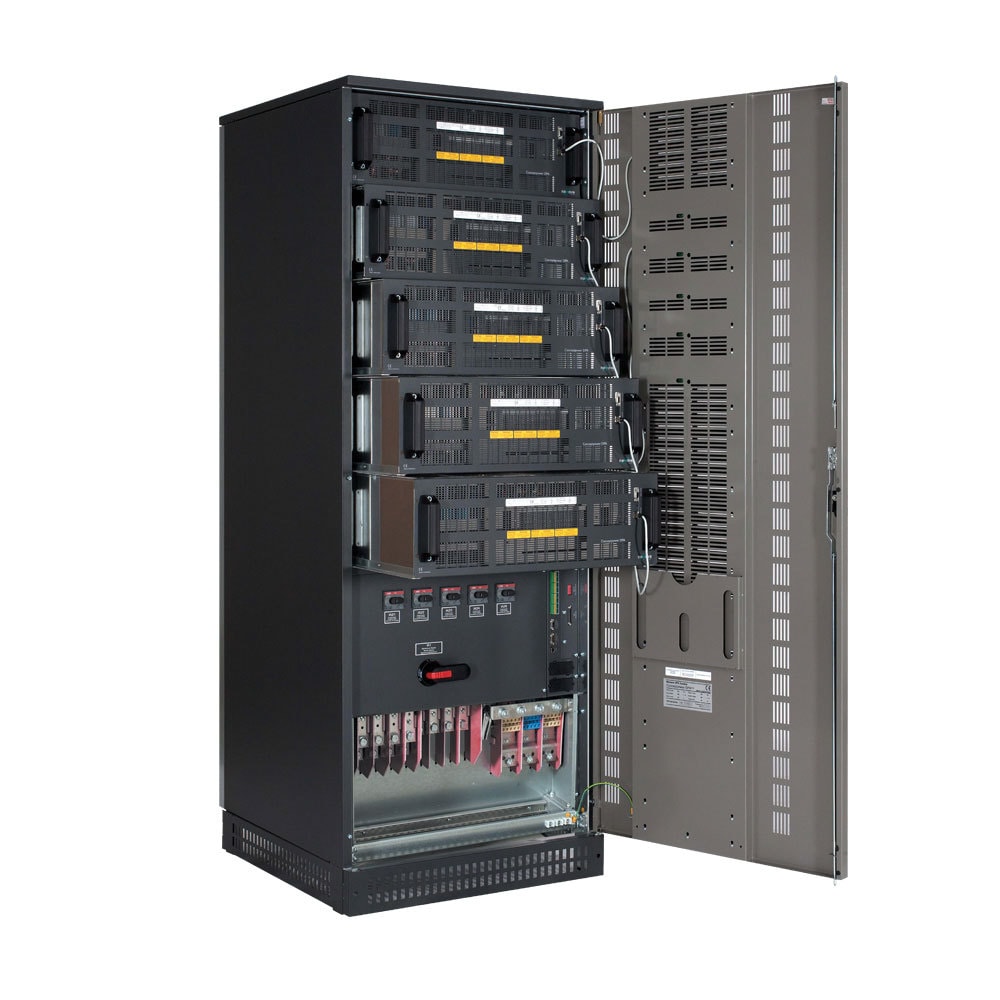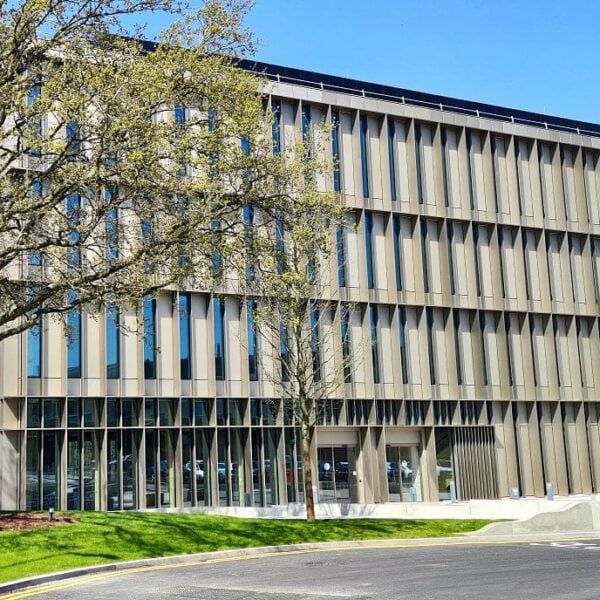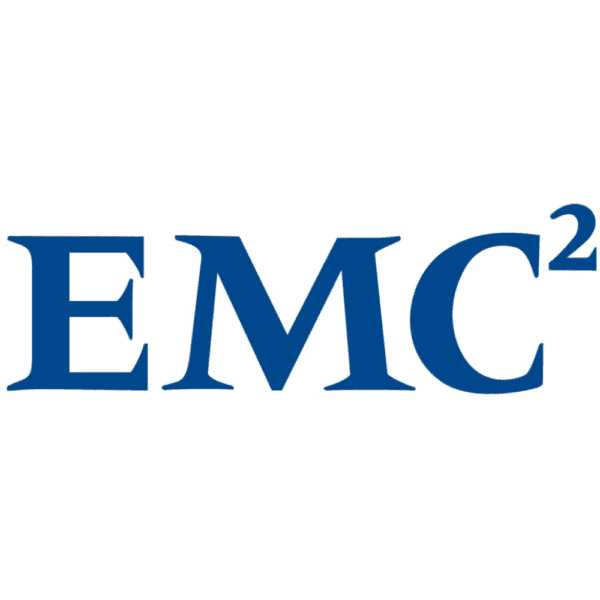UPS systems are well-established in large-scale applications such as data centres. However, their protection is increasingly required for smaller environments such as communications and networking rooms, or building services equipment.
While being scaled down, UPSs for these applications must still offer the same benefits as their larger counterparts, as the supported loads can be just as critical. In this article Ian Jackson, General Manager at KOHLER Uninterruptible Power, a KOHLER company, looks at the issues, and the solutions available from leading UPS suppliers.[/vc_column_text][vc_column_text]Today, UPS systems have become ubiquitous within data centres – and, like the data processing equipment they serve, they are typically large-scale while offering a very high level of availability, which is essential to meet modern transactional throughput rates.
However, other applications for UPSs have also emerged, which are on a smaller scale while being just as critical to their owner’s operational viability. One example is the communications room, which is gaining an increasingly important role within an organisation’s computing infrastructure through the introduction of technology such as PoE (Power over Ethernet) and PoE Plus as well as IP telephony. Other examples include edge switches and other network electronics, and building systems such as access control and fire alarm panels.
For such applications, the ideal UPS would be one that offers, as far as possible, the same features as its larger-scale data centre counterparts, while being scaled down technically and commercially to the needs of the smaller environments. Below, we look at how UPS manufacturers can meet these challenges for user engineers and managers.
UPSs for these communications, networking and building applications are typically rated up to 50 kVA. At these levels, it is easier to locate the UPSs and their batteries in the same area as their client equipment without excessive space demands or acoustic noise levels. KOHLER Uninterruptible Power’s KOHLER PW 9000DPA/TP, for example, is a compact floor-standing unit that can deliver up to 50 kVA from a 0.4 m2 footprint – providing a power density of up to 100kW/m2. In standard configurations, this even includes batteries, which are integrated in the UPS cabinet.
Clean power at all times
Although smaller-scale, many of these loads require a full three-phase power supply. They also warrant true on-line double conversion, rather than off-line or line-interactive topology for a couple of reasons. Firstly, electronic equipment for communications, networking and other applications is sensitive, not only to power blackouts, but also to other aberrations such as brownouts, transients, waveform distortion and surges. Double-conversion systems protect their critical loads from such events as their rectifier and inverter electronics sit between the incoming raw mains and the load, providing an effective filtering function.
Secondly, on-line is the only true uninterrupted topology, as the batteries are always connected to the UPS’s internal DC busbars during normal mains operation. There is no interruption to power due to switching between battery and mains at the beginning and end of a mains failure.
High availability and energy efficiency, plus scalability
While on-line double conversion topology is essential for protecting sensitive loads, the power’s quality must be matched by a very high availability – maintaining power to IP phone, network and building systems. Single KOHLER PW 9000DPA/TP units achieve high availability by using redundant critical circuits (RCCs) which duplicate all of their internal critical components and circuitry. Single points of failure are eliminated, allowing very high reliability and availability under all circumstances.
Scalability is also easy and cost-effective; if growing demand on the communications or other client systems calls for more UPS capacity, extra UPS cabinets can simply be added in parallel – up to 20 in total – to meet the increased demand. This arrangement can also improve overall UPS availability, as the paralleled cabinets can be deployed in an N+1 redundant configuration. If one unit fails, the remainder can fully support the load without interruption, until and while the faulty unit is removed and replaced. Each unit includes a maintenance bypass switch to allow its isolation, removal or maintenance without load shutdown.
While communications and network rooms are not as large as data centre installations, UPSs in these environments still conduct significant power, so energy efficiency, reduced operating costs and a green footprint remain as essential requirements. KOHLER PW 9000DPA /TP delivers very high efficiency through its transformerless design and Energy Saving Inverter Switching (ESIS). With both rated and partial loads an efficiency of up to 95.5% is possible. Further cost savings are effected through ripple-free and optional temperature-controlled battery charging that protects batteries and extends their operating lives.
These units also feature a very high input power factor, reaching 0.99 at 100% load. This minimises the magnitude of the input current, reducing associated switchgear, as well as costs related to fusing and cable sizing, in some cases even reducing electricity bills. Additionally, Total Harmonic Distortion (THDi) is extremely low, measuring below 3% at full load. This eliminates possible interference with nearby equipment and saves unnecessary over-sizing of generators, cabling and circuit breakers, while extending the lifetime of all input components.
Different installations have varying requirements for battery autonomy. A choice of UPS cabinet sizes to accommodate appropriate battery capacities can serve many applications. If longer autonomies are necessary, extra battery cabinets that blend with the UPS units should be available.
Communications
Just like their larger data centre counterparts, these ‘communications-room type’ UPSs are of limited utility unless they can communicate with related upstream and downstream equipment. If they are experiencing battery or power problems that could compromise power availability, they need to provide timely warnings to the critical load, allowing a safe and graceful shutdown. Alternatively, if a generator is available, UPS-generator communication is essential in the event of a power problem. This will allow the generator to start up and synchronise with the UPS, before the UPS battery autonomy is exhausted.
Communications such as these can be carried out using simple volt-free contact signalling, or more sophisticated serial or network communication ports, with the option of using both. Communications ports make it easier to include the UPS as part of an overall site management network, also facilitating to obtain more detailed status information about the UPS, its components and environmental conditions.
Conclusions
Facilities for communications and networking equipment, and building services systems may require less UPS capacity than a data centre, yet they still require the same levels of functionality and performance – specifically for power quality, availability, energy and cost efficiency, compact sizing, flexibility and scalability, and communications capabilities.
Fortunately, engineers and managers responsible for such installations can obtain UPS systems that meet these scaled-down, yet demanding requirements. The KOHLER PW 9000DPA /TP is an excellent example of the powerful, compact systems now available on this scale.






